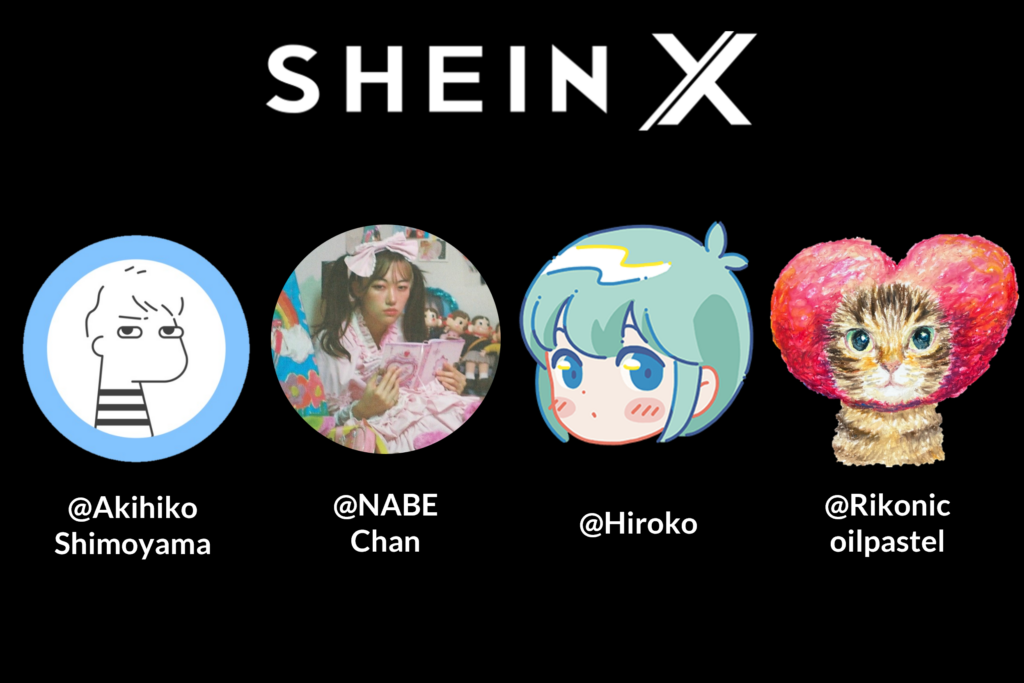As we advance in building circular systems within our company, it’s essential that we first know how our customers wear and share our clothing to actively involve them in transitioning to a more circular economy. We conducted six studies to achieve this, surveying over 3,500 SHEIN customers in the U.S., Mexico, Brazil, the UK, France, and Germany. These findings reveal the top 5 insights into our customers’ awareness of circularity and engagement.
SHEIN Customers Have Increased Circular Fashion Habits
SHEIN customers clearly expressed a strong desire to integrate circular practices into their daily lives. Among all age groups surveyed (18-29 and 30-44 years old), donating old clothes and engaging in peer-to-peer resale online emerged as the two most popular ways of participating in the circular fashion ecosystem. Customers also indicated a growing interest in various circular activities and a readiness to increase their involvement at an elevated frequency in the coming year.
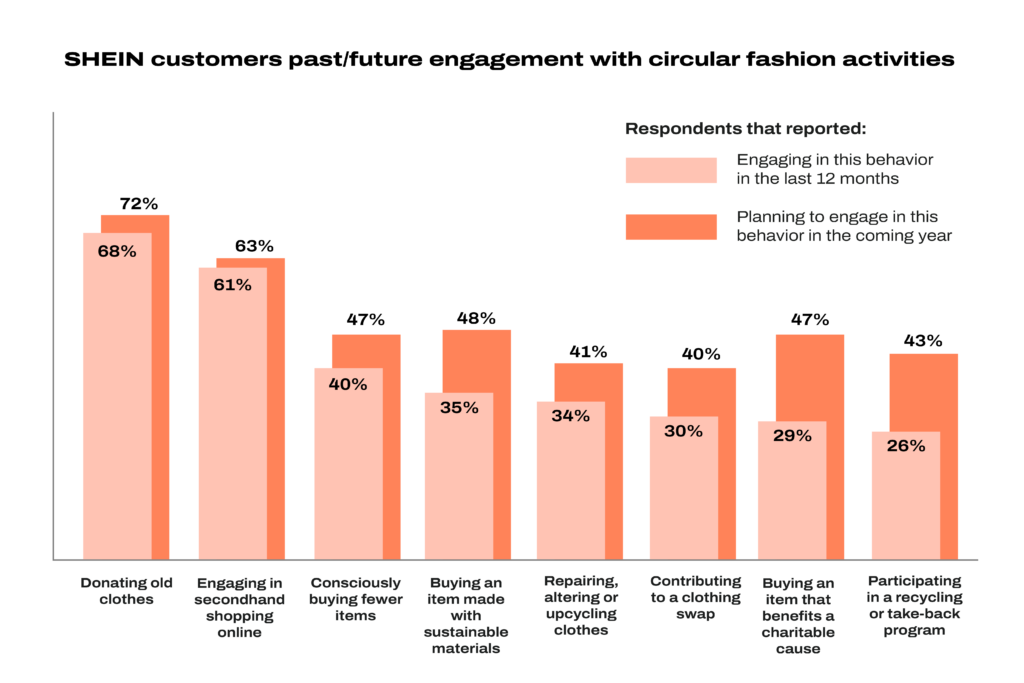
Question: “Which of these sustainable/circular fashion activities have you done in the past year? Intended to do next year?”
Encouraging Circular Behaviors in a Way That’s Culturally Relevant
How customers handle clothing that does not fit or meet their expectations varies across the markets we studied. Customers in the U.S., Mexico, and Germany tend to pass these items on to friends and family. Meanwhile, 75% of SHEIN customers preferred reselling these items through online platforms in France. The diverse approach to engaging with circularity differs by region, providing valuable insights on how we can better align with SHEIN customers today and support their journey toward circular fashion practices in the future.
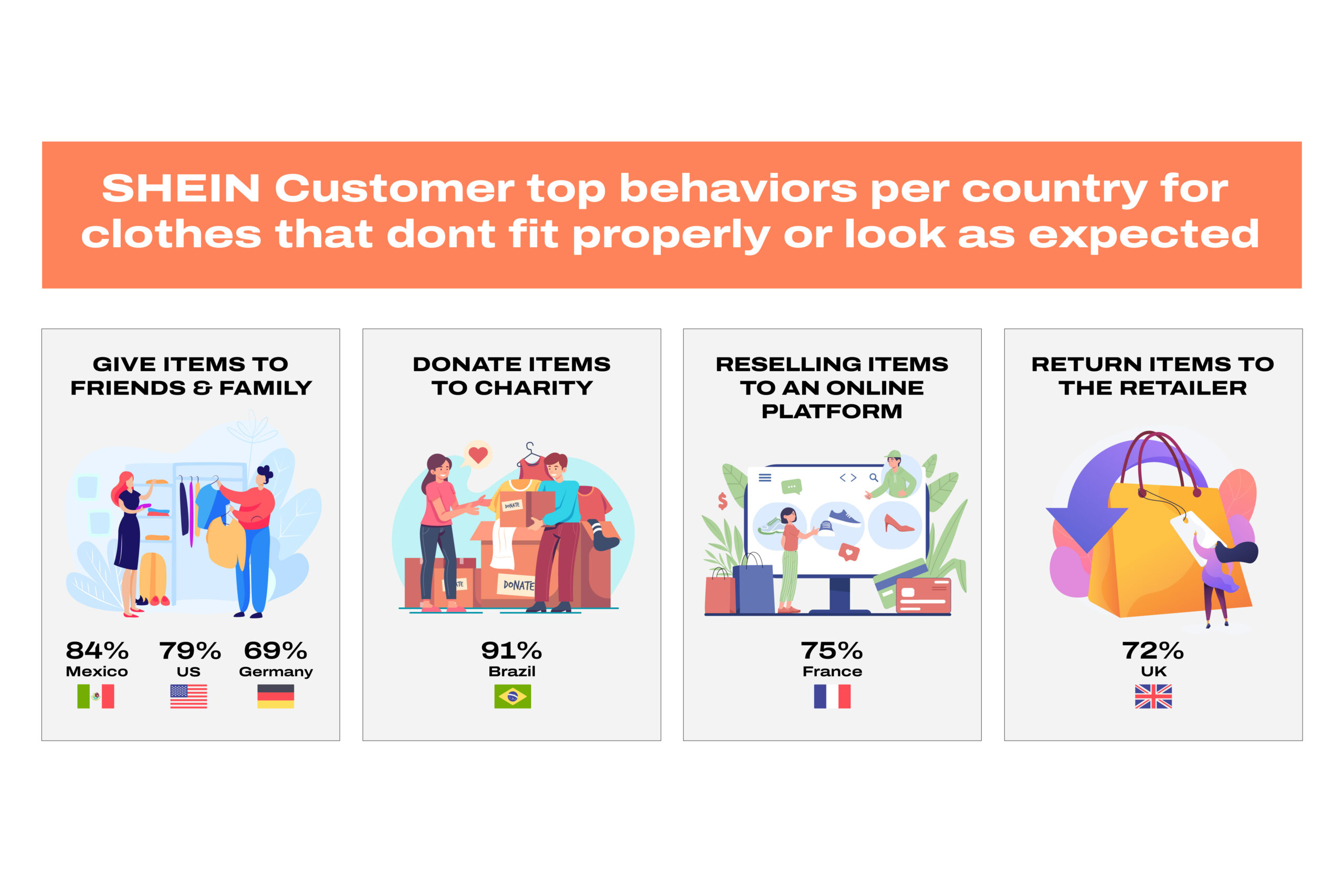
Question: “How likely are you to do the following end-of-life activities with items that don’t fit properly or look as expected?”
Driving a Growing Demand for SHEIN Pre-loved and Re-loved
Resale is an integral part of the fashion industry’s shift towards circularity. While SHEIN’s customers engage with resale in diverse ways based on demographics and location, their primary motivation remains the same across all groups: money. Reselling allows fashion enthusiasts to earn money from their pre-loved pieces and enjoy savings on new finds. While the appeal of a good deal is universal, our survey in Brazil, the UK, France, and Germany indicates that nearly half of the respondents in these regions are motivated to buy secondhand clothing online because of their shared commitment to sustainability and circular fashion.
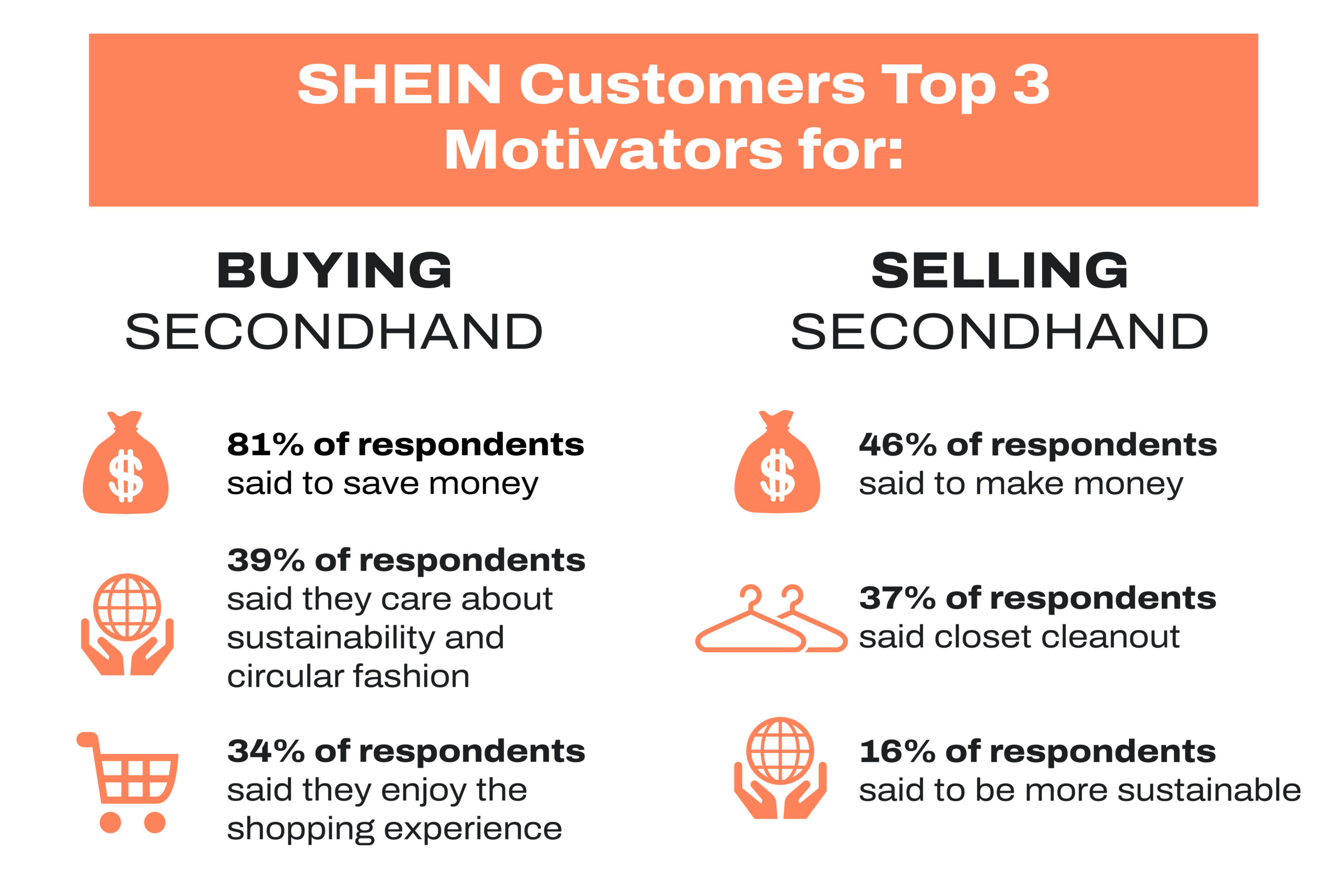
Question: “What motivates you to purchase secondhand clothing online?” “What is your primary reason for selling unwanted clothing through an online platform?”
“I usually get things retailers no longer sell that I want or had my eye on. I enjoy saving money on like-new quality items at a fraction of the price, and seeing people make money off things they no longer want instead of tossing them into landfills is something I appreciate.”
– SHEIN Customer
Question: “How does shopping secondhand make you feel?”
On average, SHEIN customers buy or resell pre-loved clothing online 1-4 times a year. Interestingly, the older age group consistently utilized online resale platforms just as frequently, if not more, than their younger counterparts in every market we examined.
Debunking Misconceptions on Wear Habits
SHEIN fans are wearing their favorite SHEIN pieces multiple times. Most respondents reported wearing SHEIN items over 10 times, with a third getting over 30 wears. Younger customers (18-29 years old) often get more use out of SHEIN clothing than their older counterparts (30-44 years old). For example, in the U.S., 37% of the younger age group wear their SHEIN clothes between 11-30 times, and 28% wear them over 30 times, surpassing the figures for the older age group at 29% and 23%, respectively.

Bridging the “Intention/Action Gap” through Increased Awareness
We strive to guide our customers towards a more circular future, giving them insights into the principles of circularity and its environmental effects to enable informed purchasing decisions. While our survey reflects progress in awareness about circularity, there’s more to impart as nearly half of respondents acknowledged having heard about circularity but expressed a limited understanding of it.
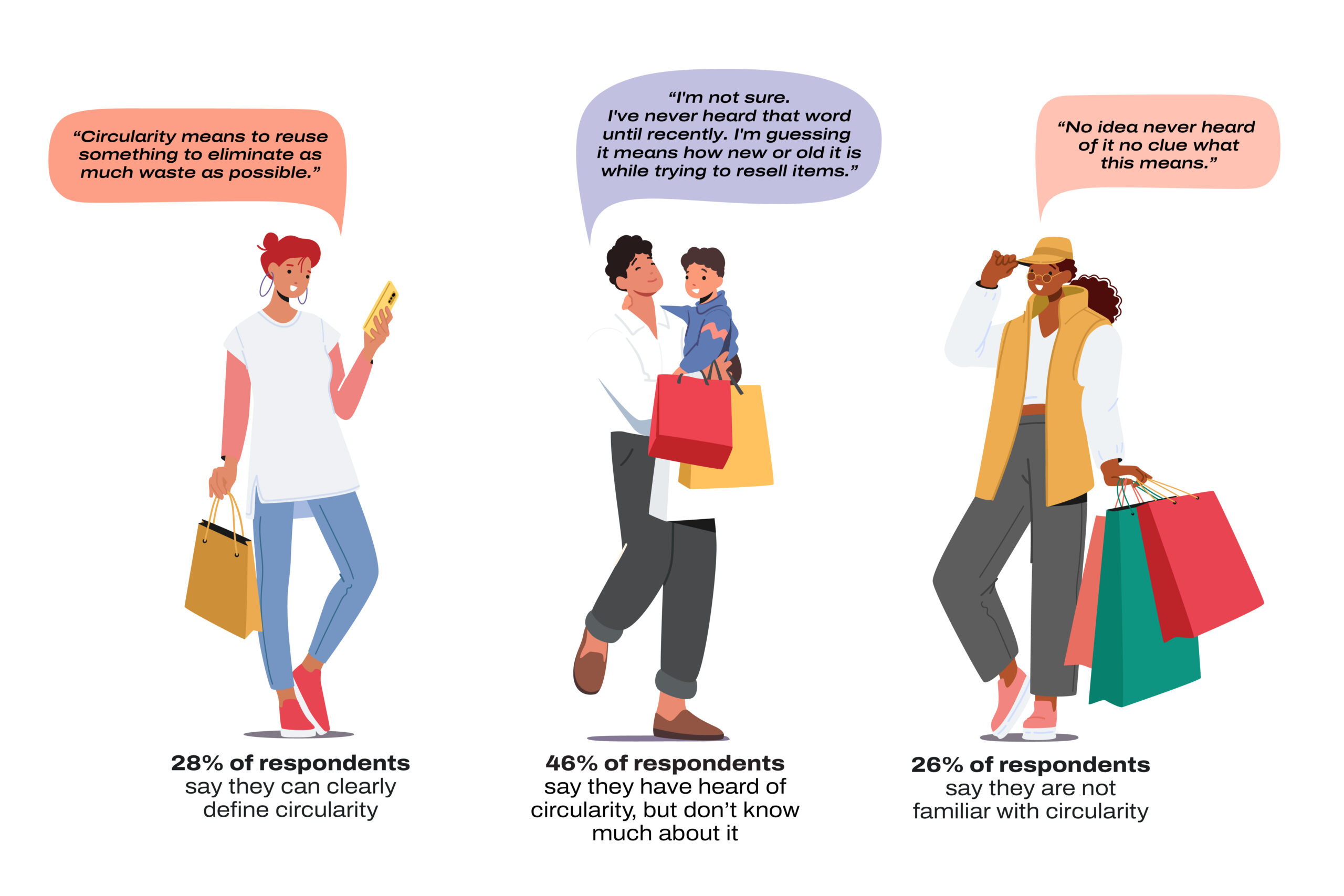
Question: “How well do you feel you understand the terms “circularity,” “circular fashion,” and “the circular economy”?”
We acknowledge our role as a fashion leader to champion circular solutions and to help keep clothing in circulation longer. To achieve this, we aim to raise awareness about circular fashion and offer practical ways for our customers to actively participate in the broader circularity movement. Our commitment involves meeting customers where they’re at and creating circular products and solutions that empower them to make informed and sustainable shopping decisions that feel right for them. We also consistently explore strategies to minimize waste and decrease the impact of our products on the environment. Learn more about our initiatives in designing circular systems and how we are bringing SHEIN fans to join us on our journey toward a fully circular future here.
Footnote: The SHEIN 2023 Circularity Study was conducted in partnership with Alchemer, a US-based market research firm, between August and September 2023. Methodology involved surveying 3,515 SHEIN customers aged 18–29 and 30–45 across markets in the U.S., Mexico, Brazil, the UK, France, and Germany.

